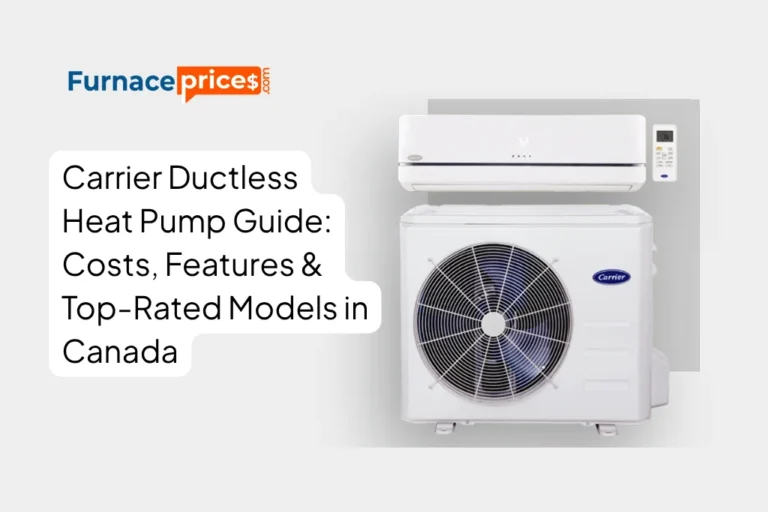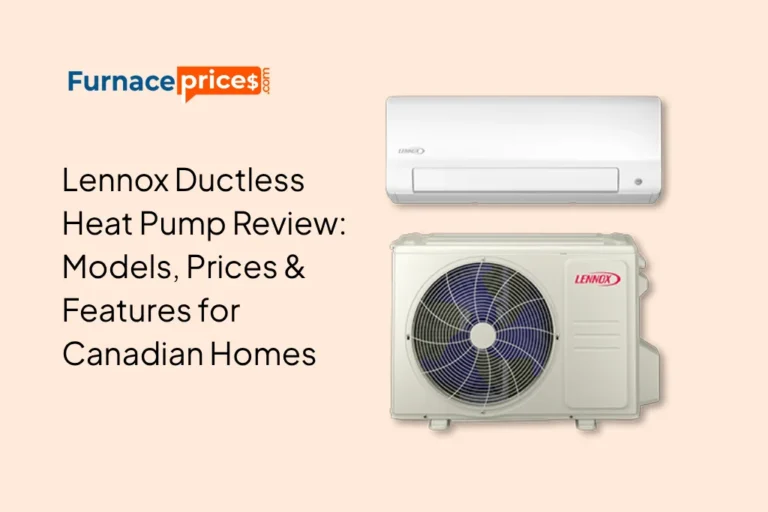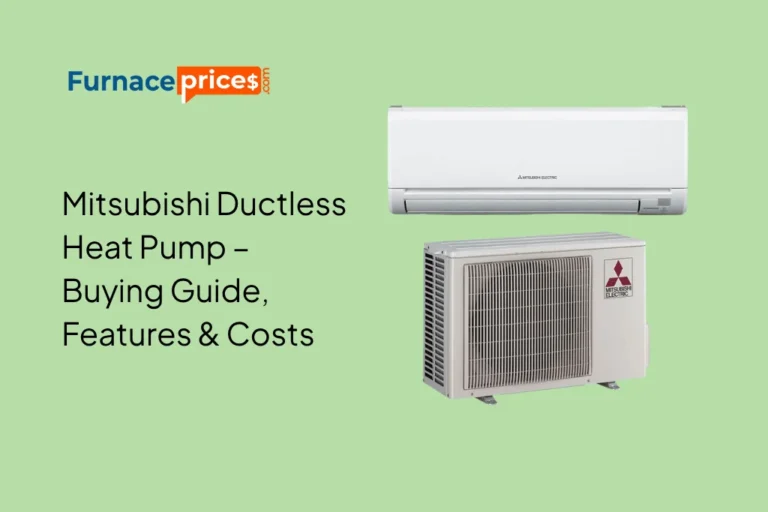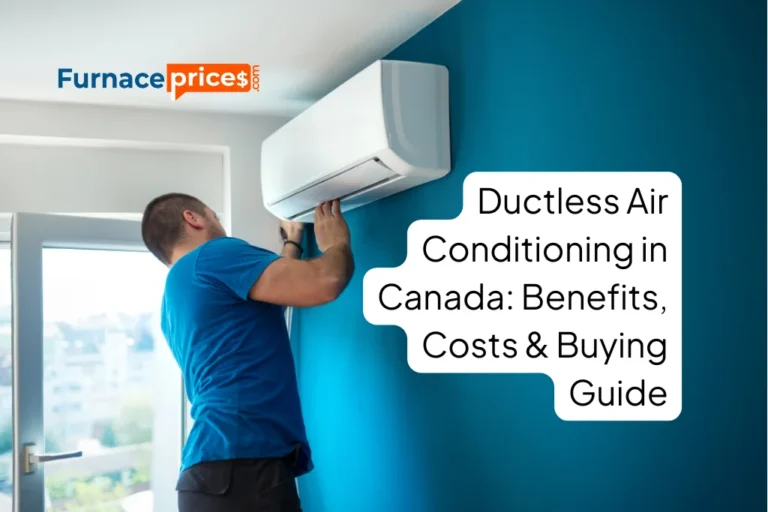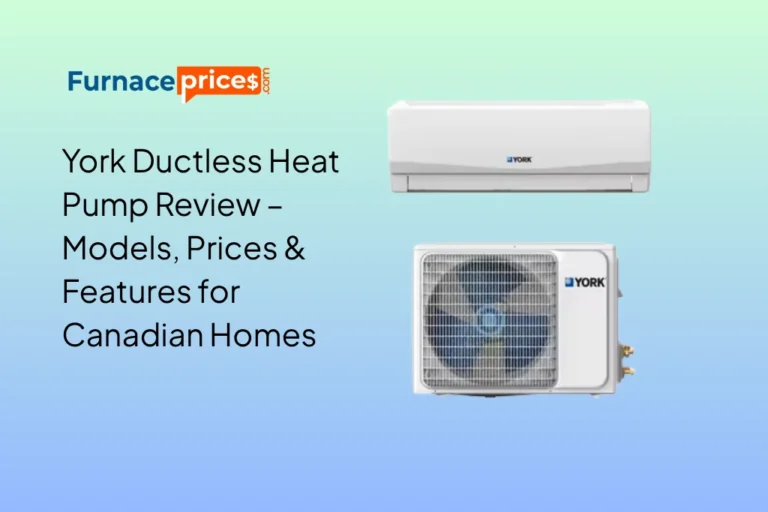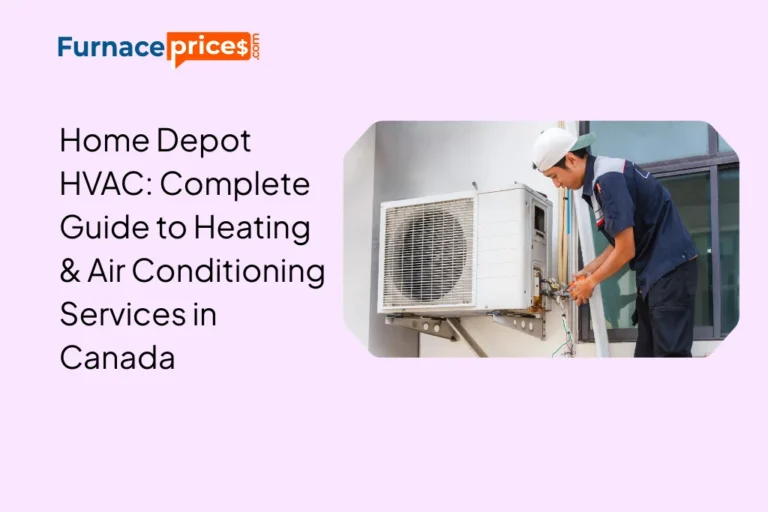Duct Cleaning Guide for Canadian Homes: Costs, Benefits & Tips
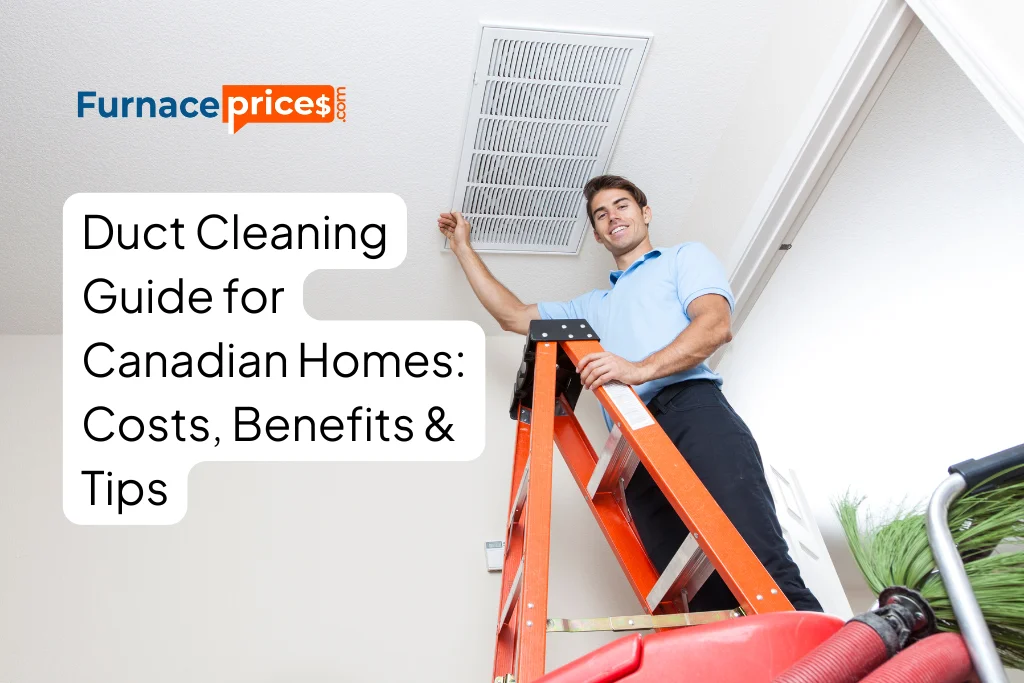
Our Complete Duct Cleaning Buyer Guide
Explore all the essentials of duct cleaning: how it works, when it’s useful, how to pick a trustworthy contractor, what to expect for costs, and whether it’s right for your home.
Many Canadian homes use forced‑air systems for heating and cooling. If your home is heated by a furnace or cooled with central air conditioning, you likely have a network of ducts running behind walls, through attics, or under floors—even if you can’t see them. Because indoor air carries dust, allergens, and other particles, your ducts can collect contaminants and then circulate them throughout your living spaces.
As a result, many homeowners wonder whether duct cleaning is worthwhile. In this guide, you’ll find everything you need: what duct cleaning involves, when you might need it, how to choose reliable service providers, cost expectations, and more.
What Is Duct Cleaning, and How Does It Work?
In forced‑air HVAC systems, ducts are the pathways that deliver conditioned air (heated or cooled) to your rooms and return air back to your furnace or air conditioner. Over time, these ducts can collect various contaminants, such as:
- Mould and mildew
- Dust and fine particles
- Outdoor pollutants
- Pollen, pet dander, allergens
- Blockages (toys, debris)
- Rodents or their droppings
Duct cleaning is the process of extracting these unwanted materials from your ductwork and associated HVAC components to help maintain indoor air quality and system performance.
Ventilation & Duct System Components
Understanding your home’s duct system can help you better maintain it and make informed decisions about cleaning. Here are the key components:
- Ducts
Ducts are the large metal tubes—usually made of galvanized steel or aluminum—that distribute heated or cooled air throughout your home. They connect all the major parts of your HVAC system, including the furnace, air conditioner, vents, and plenums. Ducts can also include connectors like transitions and elbows, which allow the system to turn corners or navigate tight spaces. These ducts can collect dust, debris, and contaminants over time. - Air Handler
The air handler is a key component that circulates air throughout your home. It houses a blower motor and an air filter, working together to pull air in, condition it through the furnace or A/C, and then push it back into the duct system. When dust and debris accumulate inside the air handler, it can reduce efficiency and air quality, so this part is often included in a thorough duct cleaning service. - Registers & Grilles
Registers and grilles are the visible parts of your duct system that you’ll find on floors, ceilings, or walls. Registers are supply vents that include dampers—small levers or dials that let you adjust airflow. Grilles, on the other hand, typically cover return air vents and are always open. Because they’re exposed, these components tend to collect dust and should be cleaned regularly along with the duct system. - Flue
The flue is a critical safety component in HVAC systems that burn fuel, like natural gas furnaces. It vents harmful combustion gases, such as carbon monoxide, safely outside your home. A properly functioning flue ensures that these gases don’t circulate indoors. During inspections or cleanings, contractors may check the flue to ensure there are no blockages or leaks, as any issues here could pose serious health and safety risks. - Plenums
Plenums are the air distribution boxes attached to your HVAC unit. Most systems have two: a supply plenum, which directs conditioned air into the ducts, and a return plenum, which draws air back into the system for reconditioning. These boxes help regulate airflow throughout the home and can be hotspots for dust and debris buildup. Cleaning plenums is an essential step in a complete duct cleaning service to maintain system balance and performance.
When cleaning, contractors aim to access and clean as many components as possible—not just the main ducts but also registers, coils, and fans.
Duct Cleaning Benefits
Professionally cleaning your ductwork can provide several potential advantages:
- Improved indoor air quality
- Relief from allergy or asthma symptoms
- Removal of harmful contaminants (such as mould)
- Better airflow and HVAC performance
- Reduction or elimination of unpleasant odours
- Potentially lower energy bills
- Less frequent maintenance for your furnace or AC
- Slightly extended longevity for HVAC components
That said, the impact of duct cleaning is often moderate—not miraculous. You shouldn’t expect enormous drops in bills or dramatic extension of the furnace’s lifespan just from cleaning.
Indoor Air Quality
Cleaning can reduce the levels of dust, allergens, and mold spores in your duct system. This is particularly relevant if someone in your household has sensitivities or respiratory issues. It can also help reduce lingering smells caused by pollutants, smoke, pet dander, or molds.
HVAC Efficiency
Accumulated dust, debris, or blockages in ductwork can hamper airflow and force your system to run harder. Similarly, dirty air handler components or coils reduce efficiency. A clean duct system may help your furnace or AC run more smoothly, which can modestly reduce energy usage, lower maintenance needs, and help the system last a little longer.
Duct Cleaning Limitations
It’s equally important to understand what duct cleaning won’t do. Some providers oversell its benefits, so having realistic expectations is essential.
It Won’t Erase All Dust
While duct cleaning can remove built-up dust inside the ductwork, it doesn’t prevent dust from accumulating elsewhere in the home. Dust is continually generated (from skin cells, fabrics, outdoor air, etc.), so even after a clean, dust will eventually return.
It Can’t Solve Underlying Problems
If the ducts are dirty because of rodent intrusion, moisture leaks, or other systemic issues, cleaning alone won’t prevent recurrence. You’ll still need to address infestations, leaks, or humidity problems separately. For example, removing mould in ducts won’t stop it from returning if moisture continues to enter the system.
Do I Need to Have My Ducts Cleaned?
Duct cleaning is not something most homeowners must do regularly. In many homes, occasional cleaning is sufficient, if at all. Here are some situations when duct cleaning is more likely warranted, and when it may be unnecessary.
When Duct Cleaning Makes Sense
You might consider duct cleaning if:
- Dust accumulates excessively or nearly daily
- You detect rodent or insect presence in ductwork
- There are blockages or heavy debris inside the ducts
- Airflow seems significantly reduced in parts of the house
- You’ve recently completed major renovations
- You see visible mould growth in ducts or connected components
Note: If your system lacks advanced air filtration (just a basic flat filter) or if you delay replacing the filter, cleaning may be more beneficial in your particular case. Homes with unfinished basements, for example, tend to collect more dust and may benefit more from occasional cleaning.
When It May Not Be Necessary
You may skip duct cleaning if:
- There’s only minor dust buildup (which is normal)
- No pests or insects are present
- Airflow remains consistent across the house
- There have been no recent renovations
- You already use a good-quality air filter and change it regularly
That said, having your ducts inspected or cleaned every few years (perhaps every 3–5 years) is not harmful and may be a helpful preventive measure. An ideal time is just before the heating season (fall) when windows are closed and less outdoor dust enters. Pair it with a furnace or HVAC tune-up for convenience and efficiency.
Typical Cost of Duct Cleaning
Duct cleaning prices depend on many variables. In Canada, a common ballpark is around CAD $300–$500 for a typical single-family home, depending on the region. In some areas, prices may go above or below that.
Key factors influencing cost:
- Size and layout of your home
- Complexity and total length of ductwork
- Number of vents, grilles, and access points
- Difficulty of access (crawl spaces, tight spaces)
- Degree of contamination or obstruction
- Local labour rates and competition
In large urban centres, rates may be more competitive due to greater contractor availability, but custom or upscale homes in those areas might still have higher quotes. Avoid choosing strictly on price — very low quotes sometimes mean corners are being cut or add-ons will inflate the final bill.
How Duct Cleaning Works & What to Expect
Duct cleaning isn’t a one-size-fits-all job. The quality of a company often becomes evident in how methodical and careful they are. Below is a typical workflow for reputable duct cleaning:
- Protect the interior — cover furniture, carpets, and floors to guard against dust during the work
- Inspect the system — open access doors and examine components
- Check for hazards — look for asbestos or structural issues
- Loosen debris — use brushes or agitation to dislodge buildup
- Clean all components — not just ducts, but also coils, registers, air handler, fan blades, drain pans, motor
- Use vacuuming and extraction — powerful vacuums remove dust and particles
- Supplementary tools (if needed) — cameras, compressed air, rotary brushes, UV sterilization or antimicrobial treatments
- Post-clean inspection — verify results through the access points or a camera
- Restore insulation & seal access — reinstall and reseal anything removed
Some contractors may differ in sequence or equipment used, but a thorough service should address all key components and take precautions to protect your home.
Choosing a Reliable Duct Cleaning Company
Duct cleaning isn’t a one-size-fits-all job. The quality of service often comes down to how detailed, organized, and careful the contractor is. Below is a typical step-by-step process reputable duct cleaning companies follow:
1. Protect the Interior
Before beginning any work, technicians should take steps to protect your home. This includes covering furniture, floors, and carpets with drop cloths or plastic sheeting to prevent contamination. Cleaners may also wear boot covers to avoid tracking dirt into your home. These precautions help ensure that the cleaning process doesn’t leave more mess behind than it removes, and reflect a company’s respect for your living space.
2. Inspect the System
A thorough inspection should be done before cleaning begins. Technicians will open access panels or doors to assess the ductwork’s condition, looking for heavy buildup, blockages, or damage. This step also helps determine the best equipment and methods to use for your system. If the duct layout is complex, they may use cameras to guide their work. An initial inspection ensures a tailored and effective cleaning strategy.
3. Check for Hazards
Before getting started, professionals should identify any potential hazards, including asbestos insulation, damaged duct sections, or signs of mould or pest infestation. These issues may require special handling or additional services outside of standard duct cleaning. Safety comes first—not just for the technicians but also for your family. Addressing these risks upfront prevents damage and ensures your HVAC system is safe to clean and operate.
4. Loosen Debris
To effectively clean ductwork, debris must first be dislodged from the surfaces inside. Contractors use brushes, air whips, or rotating tools to agitate and break up dust, dirt, and other buildup along the ducts. Loosening the debris is essential for ensuring that the vacuum system can extract it properly. This step often makes the difference between a superficial job and a truly thorough clean.
5. Clean All Components
Reputable duct cleaning goes far beyond the ducts themselves. A full cleaning service should also include parts like grilles, registers, the air handler, blower motor, drain pans, and evaporator coils. These components often accumulate dust and grime, which can spread through the system if left uncleaned. Omitting these areas can limit the benefits of duct cleaning, so ensure they’re part of the service you’re getting.
6. Use Vacuuming and Extraction
High-powered vacuum systems are used to collect loosened dust and particles. These vacuums either attach directly to the duct system or use specialized hoses and suction equipment. Negative pressure is created inside the ducts to pull out debris without spreading it into your home. Portable or truck-mounted units may be used depending on access and home layout. Proper suction is key to removing contaminants efficiently.
7. Supplementary Tools (If Needed)
Depending on the level of contamination or duct design, additional tools may be used. This can include cameras for internal inspection, compressed air nozzles for tight corners, or UV lights to kill bacteria and mould. Some companies offer antimicrobial sprays or deodorizers as add-ons. While not always necessary, these tools can enhance results—especially in homes with moisture issues or past pest problems.
8. Post-Clean Inspection
Once cleaning is completed, a quality contractor should do a final walkthrough or visual inspection using cameras or viewing ports. This confirms that all major dust and debris have been successfully removed. It also provides peace of mind for the homeowner and can identify any lingering issues that may need additional attention. Some companies may offer before-and-after photos to show the results clearly.
9. Restore Insulation & Seal Access
Any insulation or access panels that were removed during the process should be carefully replaced and resealed. This ensures that the system maintains its energy efficiency and airflow isn’t compromised. Leaving access points open or poorly sealed can result in air leaks and dust re-entering the system. Final sealing is the last step in restoring your HVAC system to its optimal condition after cleaning.
Be cautious of ultra-low bids, especially if they promise a “whole‑house price” without seeing your system first. Hidden or add-on charges are common with poor-quality providers.
Commercial Duct Cleaning
If you own commercial space, duct cleaning can be more critical, especially in high-traffic environments or buildings that generate pollutants (restaurants, workshops, high-occupancy offices). Regular ventilation inspections and cleaning can help maintain air quality, reduce odours, and ensure a healthier environment for occupants. Commercial systems often require more frequent cleaning due to heavier use and stricter indoor air quality standards.
How to Keep Your Ducts Cleaner Longer
The best strategy is prevention. These steps help minimize the need for frequent duct cleaning and keep your system running more cleanly and efficiently:
- Change furnace/AC filters every 1–3 months during active seasons; always use the highest efficiency filter your system supports
- Ensure the filter is correctly sized and properly seated
- When doing renovations or home work that generates dust, seal off supply and return vents before starting
- Vacuum and dust your home regularly using a vacuum with a HEPA filter or sealed bag
- Ask your duct cleaning contractor to clean all components, not just the ductwork
- Keep humidity in check (avoid moisture intrusion) and fix leaks promptly
These practices reduce dust entry into the system and lessen the burden on ductwork.
Frequently Asked Questions (FAQs)
A: NADCA recommends cleaning every 3–5 years, but only if needed. If you’re not seeing signs like poor airflow, excessive dust, or pests, regular cleaning may not be necessary.
A: It can reduce dust in the ducts and remove existing mould, but it won’t prevent dust accumulation throughout the home, nor will it fix moisture issues that cause mould in the first place.
A: It can be worthwhile when your system meets criteria like heavy dust, airflow issues, pests, or mould. In cases without those issues, benefits tend to be marginal, so weigh the cost carefully.
A: A full, thorough duct cleaning often lasts between 90 minutes and three hours. The time depends on the size of the house, complexity of the duct layout, number of vents, and how dirty the system is.
A: Under normal circumstances, no. Reputable contractors take precautions to avoid damaging vents, walls, or HVAC components. Inexperienced or careless providers may cause minor damage—so choose wisely.
A: It’s generally not advisable. Proper duct cleaning requires high-powered vacuum systems, professional tools, and expertise. DIY attempts often fall short of effective results and may cause damage.
For more information on energy efficiency standards and incentives in Canada, visit Natural Resources Canada.
📞 Have questions? Contact us or email us at contact@furnaceprices.com.
✅ Start comparing today and make the right choice with confidence!


